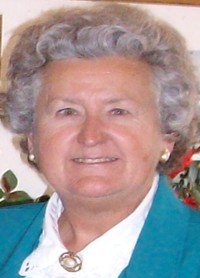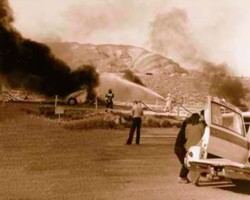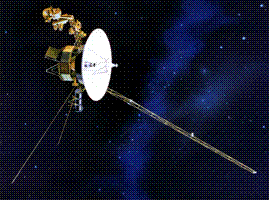Marcia Ann Thornton

Marcia Ann Thornton is the primary owner and lead engineer
for Lazy MJ Ranch, Inc. She has over 35
years of experience on various technology projects in both federal government
and private industry.
Education
Ms. Thornton has a Master of Science in
Engineering Management and a Bachelor of Science in Nuclear Engineering.
Work Experience
For the past two years, Ms. Thornton has been
the owner and principal engineering consultant for Lazy MJ Ranch, Inc. In that capacity she has provided engineering
management support to technology firms.
From 1998 to 2007 she was the Deputy for Programmatics, Satellite Active Imaging
National Testbed (SAINT), Trex Enterprises, Albuquerque, New Mexico. In that role, she supervised technical staff
of up to 15 scientists, engineers, and technicians. She also worked on safety analyses and
environmental assessment process. Her
primary task was to oversee the development of the receiver design for GEO
Light Imaging National Testbed, a program sponsored by the Air Force Research
Laboratory to use a laser to image satellites in geosynchronous orbit. She performed mechanical design analysis of
various system components.
In an ancillary role, Ms. Thornton served as
the Executive Assistant to Department of Defense Coordinator for Mars 2003
space mission which used small nuclear heater sources. Her responsibilities included review of Delta
launch vehicle databook and various Safety Analysis Reports prepared by the
Mars 2003 program office. She provided special
assistance to the Presidentially-mandated Interagency Nuclear Safety Review
Panel Coordinators during preparation of the Safety Evaluation Report that was
briefed to the President’s Science Advisor.
From 1989 to 1998 Ms. Thornton was a lieutenant
colonel in the Air Force assigned as the Director for Nuclear Energy Systems and
Department of Defense Coordinator for Interagency Nuclear Safety Review Panel,
Air Force Safety Center, Kirtland Air Force Base, New Mexico. She supervised technical staff of up to 8
scientists and engineers. She
participated in Presidentially-mandated Interagency Nuclear Review Panel
independent safety reviews of nuclear-powered space missions including Galileo
mission to explore Jupiter and its moons, Ulysses mission to orbit the poles of
the Sun, Pathfinder mission to Mars, and Cassini mission to explore Saturn and
its moons. In this position, Ms.
Thornton served as Department of Defense INSRP Coordinator for Cassini
mission. Her areas of expertise included
launch vehicle failure modes and associated probability distributions, accident
scenario development and definition, resultant radioactive source term
characterization, and probabilistic risk assessment to integrate all aspects of
the safety analysis. Ms. Thornton also
performed safety oversight for Air Force reactor and former reactor burial sites. Her duties included review of safety analyses
and technical specifications, certification of all levels of reactor operations
personnel, inspections of all aspects of reactor operations, chair of special
reactor studies to recommend approval of major changes to facility and/or its
operations, and issuance of all reactor permits. She was the course director and primary
instructor for internal basic nuclear reactor and weapons theory courses for
Directorate of Nuclear Surety staff. She
participated in the New Mexico Academy of Sciences Visiting Scientist Program
visiting junior high and high schools statewide to talk about “Living and
Working in Space” and “The Solar System” based on years of work with the space
program.
 | |  | |  | |  |
Galileo at Io with Jupiter in the background
(NASA image) | | Ulysses Orbiting the Sun
(NASA image) | | Cassini Releasing Huygens Probe into Titan's Atmosphere
(NASA image) | | McClellan Nuclear Research Center Reactor (Univ. of California-Davis image) |
From 1985 to 1988, Ms. Thornton served as a
major in the Air Force assigned as Chief, Radiofrequency Division and Director,
Small Spacecraft Experimentation Center, Air Force Technical Applications
Center, Patrick Air Force Base, Florida.
In that position she supervised staff of up to 25 scientists, engineers,
and technicians charged with developing new and innovative concepts for
monitoring international compliance with various nuclear weapon test ban
treaties. She organized and directed
worldwide deployments of personnel and equipment to test and validate
monitoring concepts. She also supervised
development and integration of several space-based experiments flown on the
Space Shuttle (in-cabin, get-away-special and free flyer) to test and validate
treaty monitoring concepts.
 | | 
|
Upshot Knothole Grable Nuclear Test
(nuclearweaponarchive.com image) | | GetAway Special Rack
(Canadian Space Agency image) |
From 1982 to 1985 Ms. Thornton was a captain in
the Air Force assigned as a Physicist/Analyst, Field Command Defense Nuclear
Agency, Kirtland Air Force Base, New Mexico.
She conducted analyses for nuclear weapons development, nuclear weapons
effects, survivability, and vulnerability programs. Ms. Thornton performed scientific and
technical liaison with Department of Energy laboratories (Sandia, Los Alamos,
and Livermore) in areas of survivability analyses, countering terrorist threats
against nuclear capable units, Nuclear Emergency Search Team and Accident
Response Group activities, nuclear weapons hardware improvements, and computer
modeling. She was a member of technical
support team for Nuclear Weapons Accident Exercise 1983 (NUWAX-83). Because of her technical expertise, she
served as the Defense Nuclear Agency representative to Technical Assessment
Group studying plutonium scatter in support of the Assistant to the Secretary
of Defense for Atomic Energy. She
spearheaded commandwide program to increase the quality and quantity of nuclear
trained officers for the Military Services.
 |
| Joint DoD (DNA), DOE, and FEMA personnel participating in NUWAX exercise (simulated crash of Navy helicopter) at Nevada Test Site on May 5, 1983 as part of NUWAX ’83. (DNA image) |
From 1979 to 1982, Ms. Thornton served as a
captain in the Air Force assigned as an Instructor, United States Naval
Academy, Annapolis, Maryland. She taught
applied thermodynamics to non-engineering majors and introduction to naval
engineering to freshmen. During summer
sessions, she taught one week crash courses in public speaking and war gaming
to juniors. Her extra duties included
faculty advisor for Society of Women Engineers student chapter and Engineering
Honor Society (precursor to full fledged Tau Beta Pi, the national engineering
honor society).
From 1978 to 1979 Ms. Thornton worked as a
Staff Member, BDM Corporation, Albuquerque, New Mexico. She developed portions of computer code to
assess doses to individuals resulting from migration of the radioactive waste
from the Waste Isolation Pilot Plant at long times (greater than 1,000 years)
after waste deposition. Ms. Thornton
also worked on computer simulation to determine effectiveness of laser weapons
on combat aircraft using flight data information from Red Flag and similar
exercises.
From 1974 to 1978 Ms. Thornton served as a
lieutenant in the Air Force assigned as a Nuclear Research Officer, Air Force
Weapons Laboratory, Kirtland Air Force Base, New Mexico. She supported Presidentially-mandated
Interagency Nuclear Safety Review Panel independent reviews of nuclear-powered
space missions including Viking mission to Mars, Lincoln Experimental
Satellites 8 and 9 in Earth orbit, and Voyager mission to the outer planets
(Jupiter, Saturn, Uranus, and Neptune).
Her areas of expertise included launch vehicle failure modes and rates
corrected for historical performance, determination of radioactive source term,
and transport of radioactive material through the environment to ultimate dose
in humans. She participated in solid
rocket motor propellant project to provide test specimens by salvaging
propellant from a surplus motor. This
project included hands-on cutting of Class B explosives with no adverse
consequences and ultimately saved the Air Force over $75,000.
 | |  |
Simulated Viking Lander on Mars
(NASA image) | | Voyager Flying Among the Stars
(NASA image) |
Outside Activities
Marcia
serves as organist and Clerk of Session at the Magdalena Community
Church. She is active in the Ladies' Circle, adult Bible Study,
and Village Quilters.
Marcia
and Don (her husband of over 30 years) are building a dome house on
their land outside of Magdalena. That home will be shared with
their two grandsons: Christopher (age 10) and James (age 8). They
raise dairy goats for milk and cheese, rabbits for meat, and chickens
for eggs and meat. They also enjoy making their own sausages and
canning vegetables from their garden.
Return to Lazy MJ Ranch main page.









